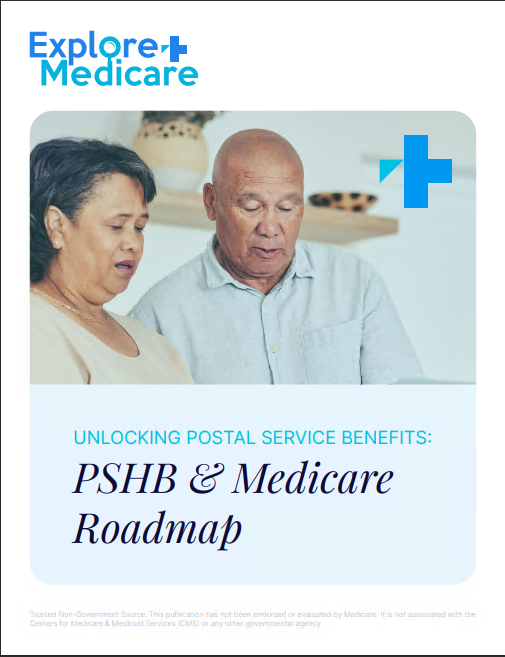Key Takeaways
-
Understanding Medicare enrollment timeframes helps you avoid penalties and coverage delays.
-
Several enrollment periods happen at different times of the year, each with its own purpose and deadlines.
Why Timing Is Crucial When It Comes to Medicare
When it comes to enrolling in Medicare, the calendar isn’t just a suggestion—it’s the rulebook. Missing a key deadline can result in higher premiums, limited coverage options, or waiting months before your benefits kick in. Whether you’re approaching 65 or helping a loved one navigate Medicare, knowing when to act is just as important as knowing what to choose.
The Initial Enrollment Period (IEP)
The Initial Enrollment Period is your first chance to sign up for Medicare, and it only happens once. This 7-month window includes:
-
The 3 months before your 65th birthday month
-
Your birthday month
-
The 3 months after
If you enroll during the three months before your birthday month, coverage starts on the first day of your birthday month. If you wait until the month of or after, your coverage may be delayed.
What You Can Sign Up For During IEP
-
Medicare Part A (Hospital Insurance)
-
Medicare Part B (Medical Insurance)
-
Medicare Part D (Prescription Drug Coverage)
Missing this window may subject you to penalties unless you qualify for a Special Enrollment Period.
General Enrollment Period (GEP)
If you miss your Initial Enrollment Period, the General Enrollment Period runs from January 1 to March 31 each year. Coverage begins on July 1.
Who Should Use the GEP?
-
Individuals who didn’t sign up during their IEP and don’t qualify for a Special Enrollment Period.
-
Those looking to enroll in Medicare Part A and/or Part B.
Keep in mind: If you delay enrollment in Part B without a valid reason, you’ll likely pay a permanent late enrollment penalty.
Special Enrollment Period (SEP)
Life happens. That’s why Medicare gives you a chance to enroll outside the standard timeframes if you qualify for a Special Enrollment Period. This is based on certain life events, such as:
-
Losing employer coverage
-
Moving out of your plan’s service area
-
Qualifying for Medicaid
How Long Do SEPs Last?
Most Special Enrollment Periods last 2 months from the date of the qualifying event, but some give you up to 8 months—like when employer coverage ends.
Annual Enrollment Period (AEP)
Every year, you get a chance to make changes to your Medicare coverage during the Annual Enrollment Period, which runs from October 15 to December 7.
What You Can Do During AEP
-
Switch between Original Medicare and Medicare Advantage
-
Change or drop a Part D plan
-
Switch from one Medicare Advantage plan to another
Changes made during AEP take effect on January 1 of the following year.
Medicare Advantage Open Enrollment Period (MA OEP)
This period runs from January 1 to March 31 and is only available if you’re already enrolled in a Medicare Advantage plan.
What You Can Do
-
Switch to another Medicare Advantage plan
-
Disenroll from Medicare Advantage and return to Original Medicare
-
Add a Part D drug plan if returning to Original Medicare
This period is not for enrolling in Medicare Advantage for the first time.
Late Enrollment Penalties: What to Expect
Time truly is money when it comes to Medicare. Missing deadlines doesn’t just cost you time—it can cost you more each month.
Part B Late Enrollment Penalty
-
10% added to your premium for each 12-month period you delay signing up after you’re first eligible.
-
This penalty is permanent.
Part D Late Enrollment Penalty
-
Calculated by multiplying 1% of the national base premium times the number of full months you were eligible but not enrolled.
-
Also a lifetime penalty unless you qualify for an exception.
Part A Late Enrollment Penalty (if you must pay a premium)
-
10% increase in your premium for twice the number of years you didn’t sign up.
Employer Coverage and Delayed Enrollment
If you’re still working and have health insurance through your employer (or a spouse’s), you might be able to delay Parts B and D without penalty.
When Should You Enroll After Employer Coverage Ends?
You have 8 months from the time employment or employer-provided insurance ends to enroll in Part B.
But be careful—Part D only gives you 2 months to enroll without penalty.
Coordinating Enrollment With Retirement Plans
If you’re planning to retire after 65, it’s wise to mark your calendar. You’ll need to:
-
Ensure there’s no gap between your employer plan ending and Medicare starting
-
Check if your retirement date qualifies you for a Special Enrollment Period
Being proactive can help you avoid costly penalties and delays.
Timing Medicare With Social Security
If you’re already receiving Social Security benefits before you turn 65, you’ll be automatically enrolled in Parts A and B. In this case:
-
Your Medicare card will arrive about 3 months before your 65th birthday
-
Coverage will start the first day of your birthday month
If you’re not receiving Social Security benefits, you must enroll manually during your Initial Enrollment Period.
Don’t Miss These Other Important Timeframes
While the major enrollment periods get most of the attention, a few other Medicare timelines can catch you off guard if you’re not aware:
Medicare Supplement (Medigap) Open Enrollment
-
Starts when you’re 65 or older and enrolled in Part B
-
Lasts for 6 months
-
During this period, you have guaranteed issue rights—no medical underwriting
After this window closes, you may be subject to health screenings or denied coverage.
Medicare Prescription Payment Plan Enrollment
Starting in 2025, you may choose to spread your out-of-pocket drug costs across the calendar year through the new Medicare Prescription Payment Plan.
-
Enrollment happens during your Part D plan’s open enrollment window
-
This new feature can help manage high drug costs throughout the year
The Bottom Line on Medicare Timeframes
Missing a deadline with Medicare can mean more than just a headache—it can hit your wallet and limit your choices. Whether you’re signing up for the first time or reviewing your coverage annually, knowing when to act keeps you protected and in control.
Need help navigating these timelines? A licensed agent listed on this website can guide you through the process and help you make confident choices based on your unique situation.









